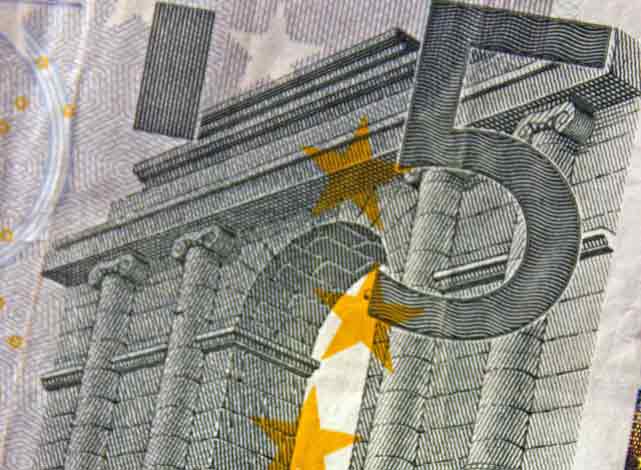Pound-to-Euro Rate Slips as Capital Inflows Keep EUR Bid
- Written by
Ben Hughes

The Pound to Euro exchange rate (GBP/EUR) is trading around 1.1860 and close to 10-day lows.
Net yields continue to support the Pound, but there are expectations of further structural flows into the Euro, especially given dollar vulnerability, which is hampering Sterling.
According to SocGen’s Kit Juckes the Pound is unlikely to make much headway, but could defy gravity for now; "The economy has not got the legs to justify a significant strengthening (of the pound) from here. I just think it's going to frustrate all the bears, left, right, and centre.”
UK fiscal policy will again be a significant focus with the multi-year spending review due on June 11th.
Strong pressure on the government to ease some of the measures designed to curb welfare spending, allied with the pledge and medium-term need to boost defence spending, will maintain underlying stresses.
According to Nomura; “fiscal concerns are more likely to become a hindrance for the currency, external balances are broadly negative, and GBP is already showing signs of overvaluation.”
As far as UK data is concerned, Nationwide reported an increase in UK house prices of 0.5% for May after a 0.6% decline previously with the year-on-year increase at 3.5% from 3.4% in April.

Nationwide Chief Economist Robert Gardner commented; “Despite wider economic uncertainties in the global economy, underlying conditions for potential home buyers in the UK remain supportive.”
Mortgage approvals declined to 60,500 for April from 63,600 the previous month and below consensus forecasts of 65,000 while mortgage lending declined after the surge in March triggered by the change in stamp duty.
There was, however, a stronger increase in consumer credit.
According to ING; “we've just seen some better house price data for May – potentially an area of support for the UK economy as interest rates get cut. We look for two further 25bp rate cuts this year.”
The final May reading for the PMI manufacturing index was revised to a 3-month high of 46.4 from the flash reading of 45.1.
Rob Dobson, Director at S&P Global Market Intelligence commented; “There are some signs of manufacturing turning a corner.”
He added; “That said, trading conditions remain turbulent both at home and abroad, making either a return to stabilisation or a sink back into deeper contraction likely during the coming months."

Comments from Bank of England Governor Bailey and other members of the policy committee will be watched closely on Tuesday.
There are strong expectations that the ECB will cut interest rates again on Thursday with the deposit rate lowered to 2.00%.
Rabobank commented; “There is little doubt that the ECB will shave another 25bp off its policy rates next week. The ECB will keep its options fully open. We still believe that this may be the last rate cut, but risks remain skewed to an additional cut. If this does materialise, we believe September is a more likely timing than July.”
According to Nordea; “We expect this to be the last cut in the cycle, but risks are tilted towards further cuts in the coming months.”
NATO defence ministers will meet this week on Thursday ahead of the full-scale summit later this month.
ING commented; “European representatives should be better prepared for further excoriating remarks from the US, and may refocus market attention on the planned big pick-up in defence spending.”
Expectations of fiscal expansion and increased defence spending will tend to provide net Euro support.
STORY LINK Pound-to-Euro Rate Slips as Capital Inflows Keep EUR Bid

The Pound to Euro exchange rate (GBP/EUR) is trading around 1.1860 and close to 10-day lows.
Net yields continue to support the Pound, but there are expectations of further structural flows into the Euro, especially given dollar vulnerability, which is hampering Sterling.
According to SocGen’s Kit Juckes the Pound is unlikely to make much headway, but could defy gravity for now; "The economy has not got the legs to justify a significant strengthening (of the pound) from here. I just think it's going to frustrate all the bears, left, right, and centre.”
UK fiscal policy will again be a significant focus with the multi-year spending review due on June 11th.
Strong pressure on the government to ease some of the measures designed to curb welfare spending, allied with the pledge and medium-term need to boost defence spending, will maintain underlying stresses.
According to Nomura; “fiscal concerns are more likely to become a hindrance for the currency, external balances are broadly negative, and GBP is already showing signs of overvaluation.”
As far as UK data is concerned, Nationwide reported an increase in UK house prices of 0.5% for May after a 0.6% decline previously with the year-on-year increase at 3.5% from 3.4% in April.

Nationwide Chief Economist Robert Gardner commented; “Despite wider economic uncertainties in the global economy, underlying conditions for potential home buyers in the UK remain supportive.”
Mortgage approvals declined to 60,500 for April from 63,600 the previous month and below consensus forecasts of 65,000 while mortgage lending declined after the surge in March triggered by the change in stamp duty.
There was, however, a stronger increase in consumer credit.
According to ING; “we've just seen some better house price data for May – potentially an area of support for the UK economy as interest rates get cut. We look for two further 25bp rate cuts this year.”
The final May reading for the PMI manufacturing index was revised to a 3-month high of 46.4 from the flash reading of 45.1.
Rob Dobson, Director at S&P Global Market Intelligence commented; “There are some signs of manufacturing turning a corner.”
He added; “That said, trading conditions remain turbulent both at home and abroad, making either a return to stabilisation or a sink back into deeper contraction likely during the coming months."

Comments from Bank of England Governor Bailey and other members of the policy committee will be watched closely on Tuesday.
There are strong expectations that the ECB will cut interest rates again on Thursday with the deposit rate lowered to 2.00%.
Rabobank commented; “There is little doubt that the ECB will shave another 25bp off its policy rates next week. The ECB will keep its options fully open. We still believe that this may be the last rate cut, but risks remain skewed to an additional cut. If this does materialise, we believe September is a more likely timing than July.”
According to Nordea; “We expect this to be the last cut in the cycle, but risks are tilted towards further cuts in the coming months.”
NATO defence ministers will meet this week on Thursday ahead of the full-scale summit later this month.
ING commented; “European representatives should be better prepared for further excoriating remarks from the US, and may refocus market attention on the planned big pick-up in defence spending.”
Expectations of fiscal expansion and increased defence spending will tend to provide net Euro support.
International Money Transfer? Ask our resident FX expert a money transfer question or try John's new, free, no-obligation personal service! ,where he helps every step of the way, ensuring you get the best exchange rates on your currency requirements.
TAGS: Pound Euro Forecasts
Comments are currrently disabled
Related Stories:
- Pound to Euro Forecast: GBP Underperforms on UK Tax Hike Fears - August 1, 2025
- Pound-to-Euro Rate Sinks as Dollar Surges on US Jobs Shock - August 1, 2025
- Pound to Euro FX Forecast: Sterling Slips Despite FTSE Record High - August 1, 2025
- Pound-to-Euro Dips Ahead of Eurozone Inflation - July 31, 2025
- Pound-to-Euro Forecast: GBP "Should be Trading Above 1.1765" - July 31, 2025
- Pound-to-Euro Climbs as Eurozone Growth Falters - July 30, 2025
- Pound to Euro Forecast: GBP Eyes 1.16 as Trade Tensions Weigh on EUR - July 30, 2025
- "Standout" Rally for Pound and Dollar Against Euro on US-EU Trade Deal Reaction - July 29, 2025
- Pound to Euro FX Forecast: GBP JUMPS 1.25% in "Huge Move" Higher - July 29, 2025
Latest News:
- Pound to Euro Forecast: GBP Underperforms on UK Tax Hike Fears - August 1, 2025
- Pound-to-Euro Rate Sinks as Dollar Surges on US Jobs Shock - August 1, 2025
- GBP/USD Forecast: Pound Surges Against Dollar as US Jobs Slows Sharply - August 1, 2025
- Pound to Euro FX Forecast: Sterling Slips Despite FTSE Record High - August 1, 2025
- Pound Sterling to Dollar Forecast: Risk of GBP Retreat to 1.3150 - August 1, 2025
- Euro to US Dollar Forecast: "EUR Could Test 1.1380 Level" - July 31, 2025
- Pound-to-Euro Dips Ahead of Eurozone Inflation - July 31, 2025
- Pound Sterling Hits Low Against Dollar and Euro on Hawkish Fed - July 31, 2025
- Pound to Dollar Support "to be Limited" on Three BoE Rate Cuts in 2025 - July 31, 2025
- Euro to Dollar Price Forecast: "EUR/USD Bearish Momentum" to Continue - July 31, 2025








